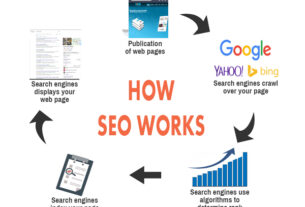Inherent to any organization is a wealth of knowledge instrumental to the entity’s overall performance and success. Navigating the vast landscape of organizational knowledge often requires a comprehensive understanding of its different types, how they function, and their underlying significance. Whether you run a small business or a multinational corporation, recognizing and harnessing the power of organizational knowledge can create a significant edge in a highly competitive market. In this article, we delve into this fascinating sphere of business enterprise that can often make all the difference.
Understanding Organizational Knowledge
In essence, organizational knowledge encapsulates critical information, expertise, and wisdom amassed within a company’s realm. This knowledge is a compilation of industry understanding, client insights, product details, strategic plans, and various other useful data. It plays an instrumental role in decision-making, strategy formulation, and the efficient execution of business operations.
Organizational knowledge could stem from different areas within the company, such as human resources, the marketing wing, the production department, customer interaction points, and the top management echelon. A process of constant learning, comprehension, and application, organizational knowledge is a powerful tool embedded in an organization’s DNA.
Notably, organizational knowledge can be categorized into two distinct forms: Tacit and Explicit knowledge. Both have their unique characteristics and are applied differently within an organizational context. Most noteworthy, these two forms of knowledge coexist, complementing each other, and driving the business forward.
To further our grasp on this matter, let’s explore these two types of Organizational Knowledge in detail and understand their significance in a business scenario.
Tacit and Explicit Knowledge: A Fundamental Distinction
Tacit knowledge is personal, contextual, and usually hard to formalize, articulate, or share. It largely encompasses skills, experiences, insights, and intuitions that individuals acquire now and then. This form of knowledge resides in the minds of the employees and, therefore, is difficult to codify or document.
Explicit knowledge, on the other hand, is structured, formalized, and can be easily communicated or shared. It can be precisely articulated, archived, and translated into data or instructions, making it far more transferable than tacit knowledge.
Despite their differences, tacit and explicit knowledge are not mutually exclusive. The two forms of knowledge often interact and pivot against each other in all spheres of business, facilitating new knowledge creation and perennial improvements.
In essence, while tacit knowledge is centered on the ‘know-how’ derived from personal experience, explicit knowledge covers the ‘know-what’ part that can be effectively documented.
Deeper Insight into Tacit Knowledge
Tacit knowledge is inherently experiential, practical, and largely non-verbalizable. It typically exists and grows within the minds of individuals as a product of direct involvement and commitment to specific activities. It influences an individual’s perception and behavior and is, therefore, considered a valuable form of knowledge.
Given its intrinsic nature, transferring tacit knowledge often requires extensive personal contact, regular interaction, and trust. People usually convey such knowledge through hands-on training, storytelling, mentoring programs, and sharing experiences in a conducive environment.
Notably, tacit knowledge plays a crucial role in innovation. The richness and creativity that Tacit knowledge brings are instrumental in igniting innovative solutions and strategies, making it a key driver of competitive advantage.
However, the significant challenge lies in retaining this knowledge within an organization. Since it’s held and managed by individuals, companies need to create environments and mechanisms to facilitate the codification and sharing of Tacit knowledge.
Scrutinizing Explicit Knowledge: Role and Utility
ALT: Employee accessing a digital knowledge management system on a computer to find company policies
Explicit knowledge refers to knowledge that is transmittable in formal, systematic language. It encompasses anything that can be documented, archived, coded, collected, and disseminated. Examples of explicit knowledge include procedures, manuals, databases, documents, how-to videos, and the like.
One of the most significant benefits of explicit knowledge is its easy accessibility and transferability. It can be systematically and continuously updated, stored, recovered, and disseminated to all relevant parties. This unique feature immensely benefits an organization by ensuring everyone has access to vital information when they need it.
Explicit knowledge also serves as a concrete foundation for organizational learning and continuous improvement. With explicit knowledge, employees can learn from the past, prevent the recurrence of mistakes, inspire new ideas, and foster a culture of learning and innovation.
However, while explicit knowledge is relatively easy to capture and share, it is often devoid of context, which might limit its potential. Again, although procedures and databases are crucial for the smooth functioning of an organization, they cannot replace tacit knowledge’s richness and depth, which come from personal experience and insights.
Leveraging Organizational Knowledge for Business Success
Organizational knowledge, both tacit and explicit, is more than just a passive repository of information. It is a dynamic resource that fosters innovation, facilitates decision-making, paves the way for sustained business growth, and ultimately defines an organization’s competitiveness.
An organization’s success significantly boils down to how well it manages and utilizes its knowledge resources. A strategic approach to managing organizational knowledge involves capturing, organizing, sharing, and applying knowledge to accomplish organizational objectives effectively.
Organizations that successfully leverage both tacit and explicit knowledge manage to stay nimble, drive innovation, foster a learning and growth culture, and enhance their overall business performance. They are the ones who succeed in creating a sustainable competitive advantage in today’s ever-changing business landscape.
Overall, understanding and effectively managing the different types of organizational knowledge are fundamental to the long-term success and growth of any entity. Therefore, organizations must invest in structured knowledge management practices, foster a conducive environment for knowledge sharing, and promote learning at all levels.




